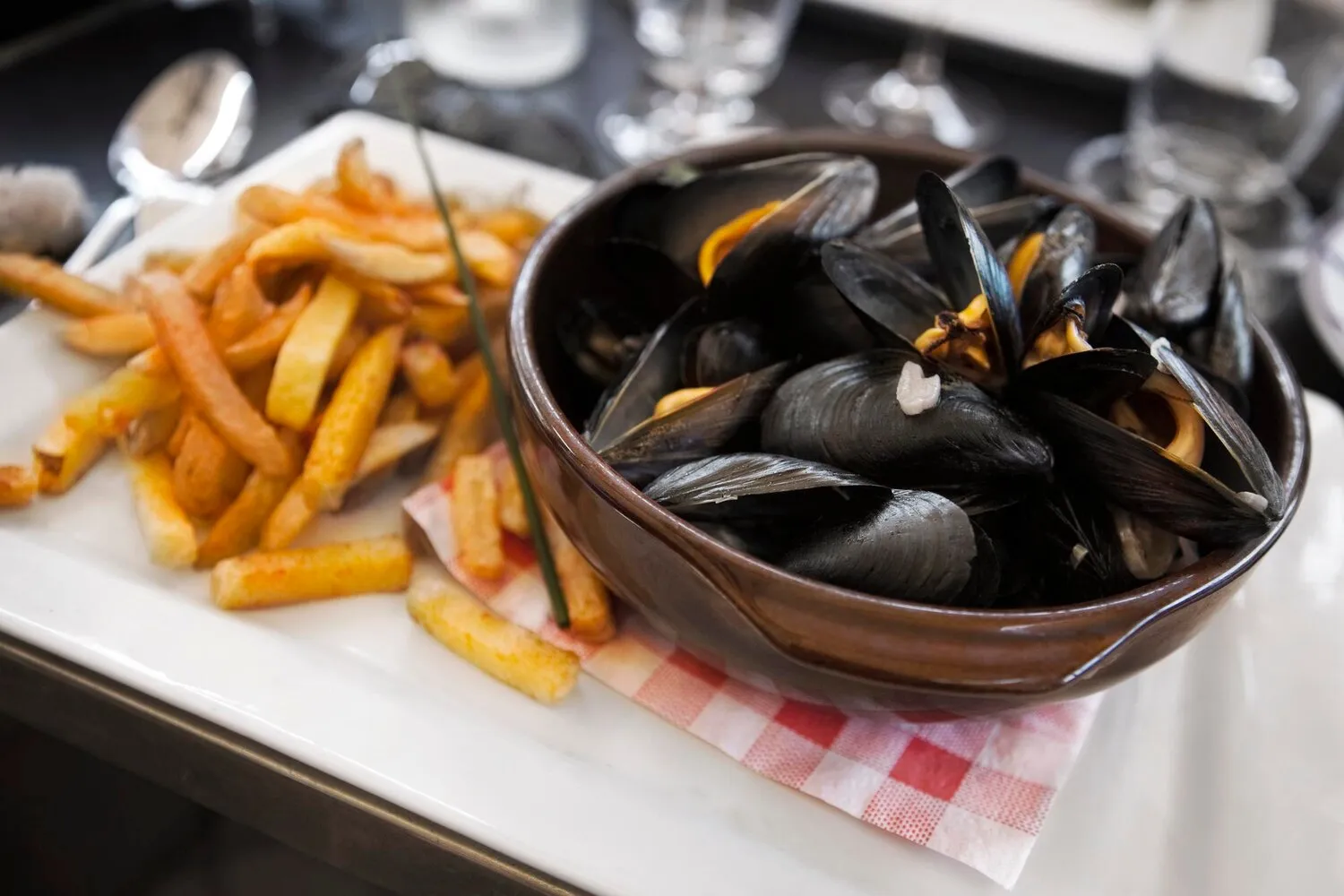
Moules frites
Mussels cooked in white wine or other broth, served with French fries. A classic brasserie dish.
Nutrition Facts
* The % Daily Value (DV) tells you how much a nutrient in a serving of food contributes to a daily diet. 2,000 calories a day is used for general nutrition advice.
While the precise origins are debated, moules frites likely emerged in Belgium, combining the nation's love of mussels (often sourced from the North Sea) with the readily available and increasingly popular fried potatoes. The dish gained traction in the late 19th or early 20th century, becoming a staple in Belgian cuisine and spreading in popularity to neighboring France and beyond.
Moules frites is more than just a dish; it's a social experience, often enjoyed in casual settings with friends and family. It represents a key aspect of Belgian culinary identity and is a beloved staple in brasseries and restaurants.
Communal Eating
Moules frites is traditionally served in a large pot, encouraging sharing and communal eating. This fosters a convivial atmosphere and emphasizes the social aspect of dining.
Brasserie Staple
It's a quintessential dish found in almost every Belgian brasserie and many French restaurants, solidifying its place in everyday dining culture.
Regional Variations
While the classic version remains popular, regional variations with different broth preparations (e.g., using different beers or herbs) highlight the adaptability of the dish.
Moules frites offer a delightful combination of briny, savory mussels cooked in flavorful broths and the satisfying crunch and saltiness of perfectly fried potatoes.
The flavor profile is predominantly defined by the freshness of the mussels, which impart a subtle oceanic taste. The broth, often white wine based, contributes aromatic notes of garlic, shallots, herbs (like parsley and thyme), and sometimes cream or beer. The fries provide a crispy, salty counterpoint to the tender mussels and their flavorful broth. Variations exist, with some recipes incorporating other ingredients like tomatoes, chorizo, or saffron to further enrich the broth's flavor.
Mussel Selection
Choose fresh mussels with tightly closed shells. Discard any mussels that are open and do not close when tapped. The aroma should be fresh and briny, not fishy.
Fries Perfection
Use high-quality potatoes (like russet or Maris Piper) and fry them twice for extra crispiness. The first fry should be at a lower temperature to cook the potatoes through, followed by a second fry at a higher temperature to achieve a golden-brown color and crispy texture.
Broth Consistency
Don't overcook the broth after adding the mussels. They should steam open quickly, and overcooking can make them tough. Reserve some of the broth for dipping the fries.
Serving Style
Serve the moules frites immediately, ideally in a large pot with the fries piled on top or alongside. Provide an empty bowl for the discarded shells. Offer crusty bread to soak up the delicious broth.
Explore additional Brasserie dishes and restaurants
Explore BrasserieDiscover top dining spots and culinary experiences in Reims.
Explore ReimsLearn more about the food culture, restaurant scene, and culinary heritage of France.
Explore France